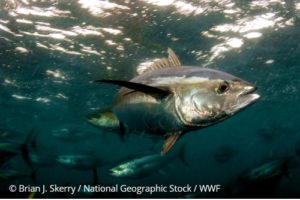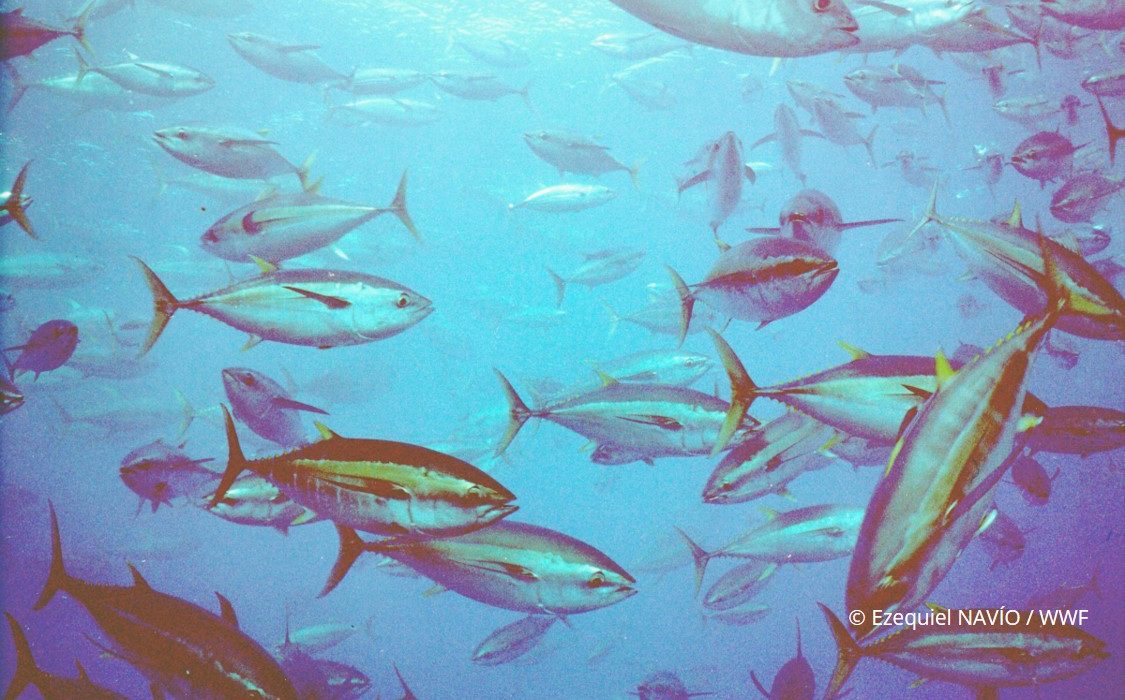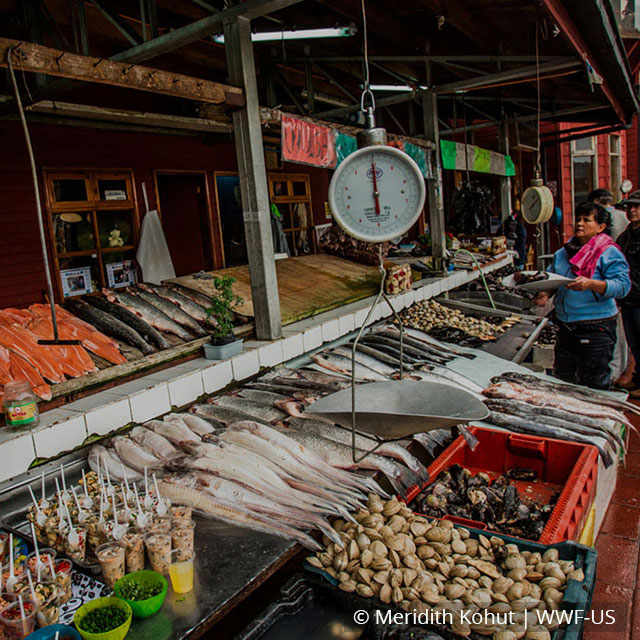For large brands that want to offer more sustainable seafood to their customers, there are two choices: (1) Buy fish from sources that are certified as sustainable, or (2) Improve fisheries and move them towards certification.
The first option delivers sustainable products immediately and rewards suppliers that already prioritize environmental performance. The second option is more challenging, but it also increases the number of sustainable fisheries overall—a benefit for the entire seafood industry and its customers, not to mention the oceans and the diverse life it supports.
In 2013, World Wildlife Fund (WWF) and Bumble Bee began collaborating on a project that takes both approaches to sustainable sourcing. Bumble Bee launched a line of canned seafood products called Wild Selections, sourced exclusively from fisheries certified to the sustainability standard of the Marine Stewardship Council (MSC). The MSC, which WWF recognizes as the leading certification program for sustainable fisheries, works with fishery managers, seafood companies, restaurants, and others to make measurable improvements on the water and to help consumers verify the origin of the seafood they buy.
In addition to sourcing from MSC certified fisheries, Wild Selections sends 13 cents of each can sold to WWF for direct investment in conservation work, for a minimum commitment of $1 million. Most of the funding is directed toward three WWF-led comprehensive fishery improvement projects (FIPs), the Vietnam yellowfin tuna FIP, the Vietnam blue swimming crab FIP, and the Thailand blue swimming crab FIP, which aim to improve their environmental performance and, ultimately, earn MSC certification.
Yellowfin tuna is Vietnam’s most important wild-capture export product, while blue swimming crab is an important export product to Thailand and Vietnam and supports some tens of thousands of livelihoods. All three FIPs strive to reduce bycatch, collect more accurate data on stock figures, and implement more robust harvest control strategies and management plans. Over the past few years, the Vietnam yellowfin tuna and blue swimming crab FIPs have made significant progress on FIP activities to address these deficiencies resulting in increased scores against the MSC standard. The Thailand blue swimming crab FIP only recently began implementation in February 2017, but has already progressed on key activities such as undertaking a stock assessment and distribution mapping.
Funding from Wild Selections also goes toward grants for research to investigate threats and identify solutions to help strengthen fisheries. One such grant has been applied to a research project  in Bristol Bay, Alaska, which lies at the epicenter of Alaska’s wild salmon fishery.
in Bristol Bay, Alaska, which lies at the epicenter of Alaska’s wild salmon fishery.
While Bristol Bay currently enjoys healthy salmon runs averaging nearly 40 million fish per year, the region faces two major threats: large-scale copper mining and climate change. The study, conducted by Dr. Carol Ann Woody with researchers from the University of Washington and the University of Alaska, mapped key streams and adjacent habitats in the Lime Hills ecoregion of the Nushagak and Kvichak River watersheds to document salmon spawning, rearing, and migration, so that these areas can be more easily protected. The project also aims to better understand specific habitat conditions essential to salmon survival, so scientists can more accurately predict how threats like copper mining and climate change would affect future salmon stocks. Data has already been collected and currently being processed, and the study’s full results and analysis are expected later this year.
A second project in Bristol Bay that also receives some funds from Wild Selections proceeds is scheduled to begin this summer. Over the course of a two-year study, researchers from the University of Washington will use drone technology to assess unique populations of “beach spawning” sockeye salmon in Lake Iliamna, which is part of the Kvijak River watershed, one of Bristol Bay’s two most important sockeye salmon river systems. Copper and gold deposits located within this system put the area at potential risk from mining, but understanding these “beach spawners” will help land use planners and policy makers make better informed decisions about the region.
WWF’s work with companies helps them harness their own purchasing power to drive change, and is an important element of its larger marine conservation work. To find out more on how to get involved, please visit the Resources section of this site.




